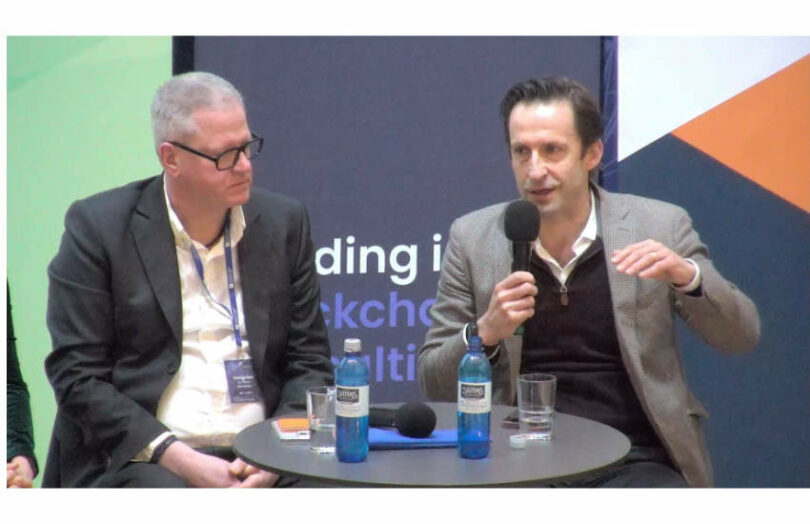The benefits of tokenized bond issuance were discussed today at the Crypto Assets Conference, with issuers represented by Siemens and kfw, investors by Union Investment, and Goldman Sachs discussing its DLT issuance platforms. While Siemens has issued a bond on a public blockchain, Goldman’s DLT solution is underpinned by a private blockchain.
Mathew McDermott, head of Digital Assets at Goldman said, “I’ll speak from a highly regulated U.S. bank. We are actually not allowed to do anything on a public blockchain, be it permissionless or otherwise. The rationale being safety and soundness. Most of the development you will see certainly from the U.S. banks, JP (Morgan), ourselves and many of the others, will be on a private blockchain.” The Goldman platform has been used for a European Investment Bank (EIB) bond issuance and to tokenize a sovereign green bond for the Hong Kong Monetary Authority (HKMA).
He acknowledged the velocity, speed and low cost of transacting on a public blockchain, particularly a layer 2 solution. That was one of the reasons for Goldman’s digital assets platform design. It has a smart contract layer where the transaction activity happens, but the final settlement is on the underlying blockchain. And that’s ‘currently’ a private blockchain.
Ramin Ghafari, head of Financial Technologies at Siemens Treasury, had a different perspective. In February, Siemens issued a €60 million bond on the Polygon public blockchain, which is a side chain of Ethereum. He said the Siemens Treasury is keen to be independent of individual banks, so locking into the platform of a single bank would not be ideal for him.
The Siemens issuance used Germany’s forward-leaning eWpG legislation. That meant there was no central security depositary. And Union Investment revealed that it invested directly in the Siemens bond rather than going via a bank. The transaction also benefited from shorter settlement times of T+1 rather than T+7.
Apart from speedy settlement and reducing intermediaries, Christoph Hock from Union Investment gave a convincing rationale for going digital. He should know as Union Investment has been one of the most prolific investors in the space. It invested in both the EIB euro-denominated digital bonds as well as the Siemens one. From today’s talk, Hock gave the impression Union was the sole investor in the initial €100m EIB bond back in 2021.
“Various investors, about 250 participated in the investor education call, but at the end, it was just us getting invested in this paper,” he said. However, the second EIB bond had multiple investors, as did the Siemens bond.
From Hock’s perspective, the benefits are quite clear. Union gets an additional 15 basis point return on a one year bond. So by lowering costs, it results in higher returns to their investors.
Apart from removing some of the intermediaries – the central securities depository, and sometimes banks – he noted that blockchain acting as the golden record source is a key advantage. Usually, for new issuances getting data into the order and execution management systems is time consuming, but with DLT, it’s smoother and quicker. On the settlement side, it can reduce risk and increase efficiencies with shorter settlement times.
He said that secondary market trading could also have cost savings and better liquidity. But the current lack of secondary markets for DLT-based securities was raised by multiple participants and resolving that is the key to unlocking tokenization volumes at scale. Europe’s DLT Pilot Regime, which commenced last week and initially runs for three years, aims to relax some rules to encourage secondary markets for DLT based securities.
Another friction is potential fragmentation. Siemens’ Ghafari noted the importance of interoperability. As issuance platforms proliferate, Siemens would need to interact with multiple blockchains and crypto registrars. “Onboarding with one crypto registrar is one thing. But would we really need to do that with all the other crypto registrars as well. How is this going to be solved in the market?” asked Ghafari.
For him, that needs to be addressed alongside scaling secondary markets.






